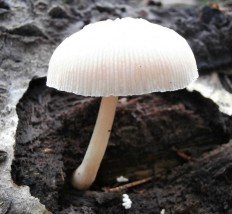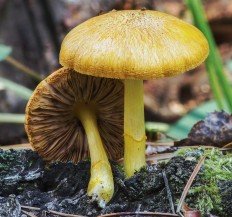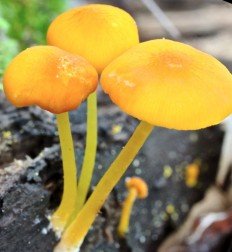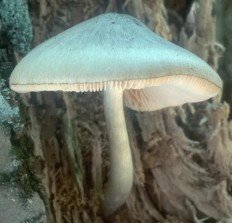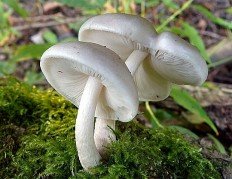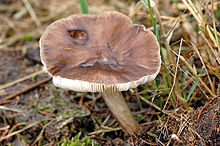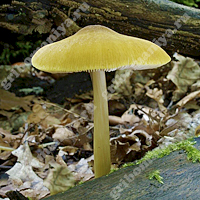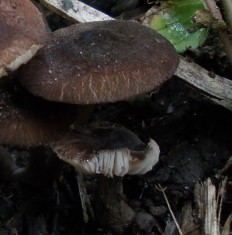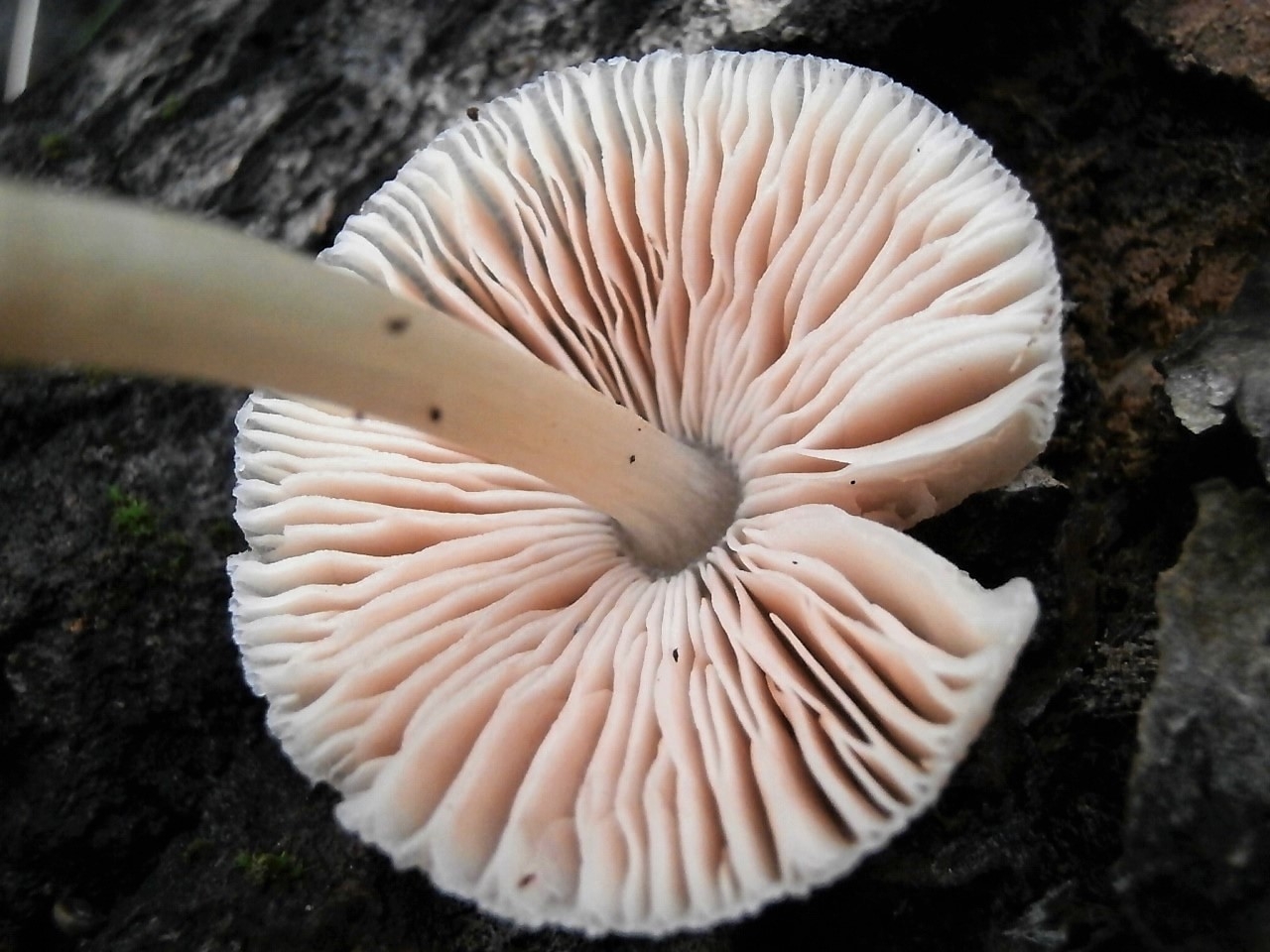Description
Fruit bodies are small.
The cap is 0.5-2 centimeters in diameter, thin-fleshy, semi-circular, bell-shaped or convex, later opens to a flat-convex, may be with a small depression or slightly protruding tubercle. The surface is grayish, in the center to dark brown, densely covered with adpressed hairs or scales of a grayish-silvery color.
free, wide, frequent, whitish or pinkish-gray, with age they become pink with a whitish edge, there are plates.
The leg is 1-3.5 × 0.1-0.3 cm, cylindrical, central, dense, thickened in the lower part. The surface is whitish or silvery-white, shiny, smooth, fibrous, bare or covered with grayish hairs at the base.
The pulp is whitish, does not change on the cut, the taste and smell are not expressed.
The remains of the bedspreads are absent, the spore powder is pink.
Spores are smooth, from broadly ellipsoid to ovate, 5-7 × 4.5-6 µm.
Hyphae without buckles, thin-walled, caps in the skin consist of cylindrical or clavate colorless and pigmented cells 10–20 µm wide; hyphae of integument of the pedicle are colorless, cells are elongated, cylindrical, 5-10 µm wide.
Basidia are four-spore, sometimes one- or two-spore, 20–35 × 7–11 µm in size, clavate, thin-walled.
Cheilocystids, 30-60 × 8-15 microns in size, of various shapes - cylindrical, clavate, vesicular or bottle-shaped, can be with an apicular appendage, thin-walled, colorless, numerous. Pleurocystids are absent or very rare, 30-40 × 12-15 microns, fusiform, thin-walled, colorless.

